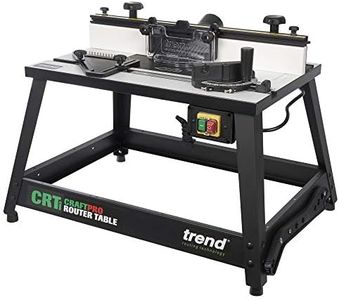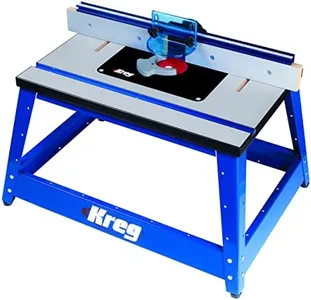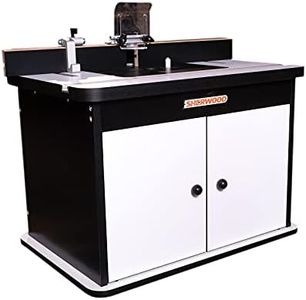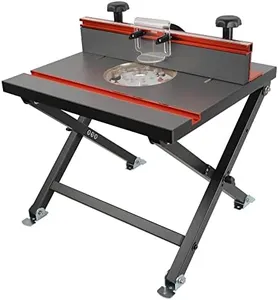We Use CookiesWe use cookies to enhance the security, performance,
functionality and for analytical and promotional activities. By continuing to browse this site you
are agreeing to our privacy policy
4 Best Benchtop Router Table
From leading brands and best sellers available on the web.Buying Guide for the Best Benchtop Router Table
Choosing the right benchtop router table can make woodworking projects easier, safer, and more precise. A router table holds your handheld router in an upside-down position, allowing you to guide wood past a stationary bit. The right table helps you achieve accurate and repeated cuts while offering improved control, especially for making grooves, shaping edges, or detailed joinery. To get the best fit for your projects, consider what types of materials you'll frequently use, the size of the items you'll handle, and what features will make your work more comfortable and accurate.Table SizeTable size refers to the dimensions of the main work surface where you place your wood. A larger table gives more space to handle big materials, providing better support and accuracy when working with longer or wider boards. Smaller tables are lighter and more portable but can be limiting for bigger projects. If you mostly work with small pieces or need to save space, a compact table could be ideal. For larger or more complex projects, a bigger surface will suit you better.
Fence Quality and AdjustabilityThe fence is what keeps your wood straight as you push it through the router bit. A good fence can be locked in place securely and allows minute adjustments, which are vital for precision work. Some fences are simple and lightweight, meant for occasional or easy jobs, while robust fences with fine adjustment features help with professional or frequent use. Choose a fence that is easy to adjust and stays firmly in place—especially if you plan on lots of detailed work.
Insert Plate CompatibilityThe insert plate is the part of the table where your router gets mounted. Compatibility means making sure your router attaches easily and firmly. Plates might be universal (fit most routers) or specific to certain brands. Some plates are made from tough plastic, while others use strong metal for stability. If you want an easy setup and plan on switching routers, look for a versatile or universal plate. For heavy use or if you work with larger routers, a metal plate will add needed strength.
Dust Collection PortA dust collection port is a feature that lets you connect a vacuum or dust collector to the table, helping keep your workspace clean and your visibility clear. Ports come in various sizes; larger ports can handle more debris, while smaller ones match compact dust collectors. If you're concerned about dust or want to keep cleanup easy, ensure the table you pick has a port that fits your existing vacuum system.
Stability and Build QualityStability relates to how solid the table feels during use, which is mainly influenced by the table's build material and the sturdiness of its legs or base. Tables built with heavier materials like cast iron or steel offer less vibration and better accuracy, while plastic or thin metal tables are lighter and easier to move but might wobble during heavy work. If you'll use your router table a lot or work with heavy materials, choose a heavier, well-built table for safety and precision. For lighter, occasional tasks, a basic, portable model can be enough.
PortabilityPortability is about how easy it is to move and store the router table. Benchtop models are naturally more portable than cabinet-style ones, but within this range, some are lightweight and have foldable parts for transport, while others are heavier for stability. Choose a more portable model if you need to move it frequently or have limited workshop space. For a permanent setup, portability becomes less important.





